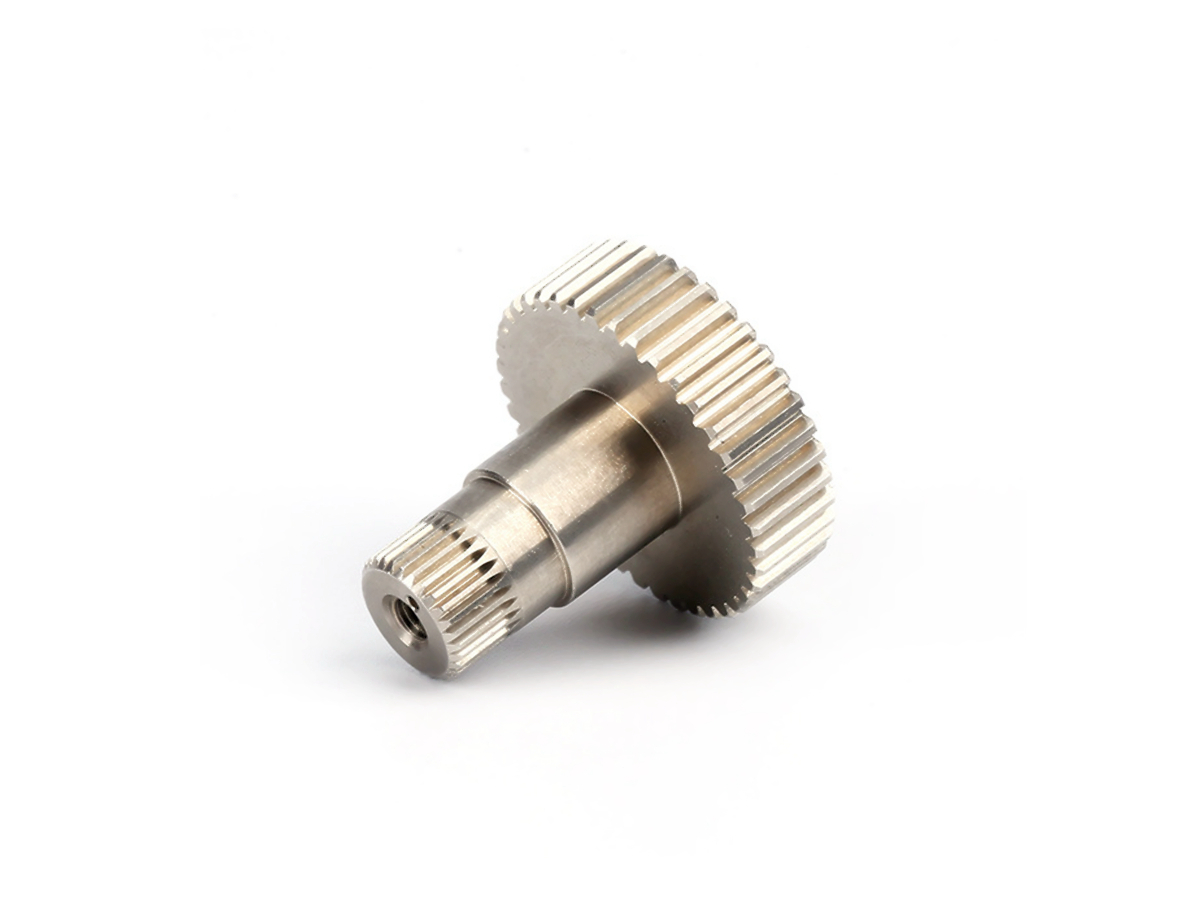Custom Low-Volume CNC Machining of Titanium Parts for Medical Industries
Introduction
Custom low-volume CNC machining of titanium parts provides the medical industry with an efficient, high-precision solution for producing durable and reliable components. Titanium alloys, especially Ti-6Al-4V, are highly valued for their exceptional strength, lightweight properties, and biocompatibility, making them ideal for medical devices and implants. As the demand for specialized, high-performance medical components continues to grow, industries increasingly rely on Titanium CNC Machining to produce low-volume, custom parts with tight tolerances (±0.005 mm) for critical applications.
Low-volume CNC machining ensures rapid development and prototyping of titanium parts, allowing medical manufacturers to quickly test, refine, and validate designs before moving to full-scale production, meeting the precise and stringent requirements of the medical industry. This Low-Volume CNC Machining solution is perfect for customized medical devices, offering quick turnaround times and flexibility to adapt to complex and evolving design needs.
Titanium Material Properties
Material Performance Comparison Table
Titanium Alloy | Tensile Strength (MPa) | Yield Strength (MPa) | Hardness (HRC) | Density (g/cm³) | Applications | Advantages |
|---|---|---|---|---|---|---|
900–1000 | 800–900 | 34–40 | 4.43 | Surgical implants, dental implants, orthopedic devices | High strength-to-weight ratio, excellent fatigue resistance | |
860–960 | 820–900 | 32–38 | 4.47 | Medical implants, bone repair | Superior resistance to stress corrosion cracking | |
550–700 | 450–600 | 30–35 | 4.43 | Surgical tools, medical prostheses | Excellent weldability, good corrosion resistance | |
800–900 | 750–850 | 34–40 | 4.43 | Medical prostheses, implants | High strength and corrosion resistance, ideal for prosthetics |
Selecting the Right Titanium Alloy for Medical Applications
Choosing the correct titanium alloy for CNC machining depends on factors such as mechanical performance, biocompatibility, and application-specific requirements:
Ti-6Al-4V (Grade 5): Ideal for orthopedic implants, dental devices, and surgical instruments due to its high strength-to-weight ratio and excellent fatigue resistance.
Ti-6Al-2Sn-4Zr-6Mo (Grade 7): Best for components exposed to harsh environments and requiring high corrosion resistance, making it suitable for long-lasting implants and bone repair devices.
Ti-3Al-2.5V (Grade 12): It is ideal for surgical tools and medical prostheses, offering excellent weldability and corrosion resistance, making it easy to manufacture and modify.
Ti-5Al-2.5Sn (Grade 6): Recommended for prosthetics and implants, providing high strength and corrosion resistance, ensuring durability in the human body.
CNC Machining Processes for Titanium Parts
CNC Process Comparison Table
CNC Machining Process | Accuracy (mm) | Surface Finish (Ra µm) | Typical Uses | Advantages |
|---|---|---|---|---|
±0.005 | 0.4–1.2 | Complex medical devices, surgical tools | High precision, flexible part geometry | |
±0.005 | 0.4–1.0 | Cylindrical titanium implants, prostheses | Excellent for rotational parts, consistent results | |
±0.01 | 0.8–3.2 | Holes in medical components, threaded parts | Fast hole-making, high precision | |
±0.003 | 0.2–1.0 | Intricate medical implants, dental components | Ideal for complex geometries, improved accuracy |
CNC Process Selection Strategy
Selecting the right CNC machining process for titanium parts is determined by part complexity, surface finish requirements, and production speed:
CNC Milling: Best suited for machining complex geometries and fine details in titanium medical components, such as surgical instruments and orthopedic devices, with tight tolerances of ±0.005 mm.
CNC Turning: Ideal for rotationally symmetrical titanium components, such as implants and prostheses, ensuring high accuracy (±0.005 mm) and consistent surface finishes.
CNC Drilling: Perfect for creating precise holes and threaded components in medical parts, with high speed and accuracy (±0.01 mm).
Multi-Axis Machining: Used for highly complex parts, offering superior precision (±0.003 mm) for intricate titanium implants and custom prosthetic components.
Surface Treatments for Titanium Parts
Surface Treatment Comparison Table
Treatment Method | Surface Roughness (Ra µm) | Wear Resistance | Max Temp (°C) | Applications | Key Features |
|---|---|---|---|---|---|
≤0.8 | Excellent | 400 | Medical implants, orthopedic components | Enhances corrosion resistance, increases surface hardness | |
≤0.4 | Excellent | 250 | Surgical tools, dental implants | Smooth surface finish, reduces friction and wear | |
≤1.0 | Superior | 450–600 | Medical tools, implants | Improved hardness and wear resistance | |
≤1.5 | Excellent | 1000 | Orthopedic devices, titanium prosthetics | Enhances fatigue strength and surface integrity |
Surface Treatment Selection Strategy
Surface treatments are crucial for improving the durability and performance of titanium parts used in medical applications:
Anodizing: Ideal for enhancing titanium medical implants' corrosion resistance and surface hardness, particularly when exposed to body fluids.
Electropolishing: Provides a smooth, mirror-like finish (Ra ≤0.4 µm), improving corrosion resistance and minimizing friction, perfect for surgical tools and dental implants.
PVD Coating: Recommended for enhancing wear resistance and hardness, ideal for medical devices subjected to frequent mechanical stress.
Shot Peening: Best for improving titanium prosthetics and orthopedic devices' fatigue strength and surface integrity, ensuring they withstand long-term usage.
Typical CNC Prototyping Methods
Effective prototyping methods for titanium parts include:
CNC Machining Prototyping: Provides rapid prototyping with high precision and low volume production of titanium parts.
Titanium 3D Printing: Ideal for creating complex and custom titanium components for medical applications.
Rapid Molding Prototyping: Efficient for creating moderate complexity titanium parts, enabling quick validation before full-scale manufacturing.
Quality Assurance Procedures
Dimensional Inspection: ±0.002 mm accuracy (ISO 10360-2).
Material Verification: ASTM F136 for Ti-6Al-4V.
Surface Finish Assessment: ISO 4287.
Mechanical Testing: ASTM F67 for tensile and yield strength.
Visual Inspection: ISO 2768 standards.
ISO 9001 Quality Management compliance.
Key Applications
Aerospace: Aircraft components, landing gears, turbine blades.
Medical Device: Orthopedic implants, joint replacements, dental devices.
Defense: Military-grade medical devices, prosthetics.
Automotive: High-performance engine parts, titanium fasteners.
Related FAQs:
Why is low-volume CNC machining ideal for titanium medical parts?
What titanium alloys are most commonly used in medical device CNC machining?
How do surface treatments enhance titanium components in medical applications?
What quality standards apply to CNC machined titanium parts for medical devices?
Which medical applications benefit from titanium CNC prototyping?

